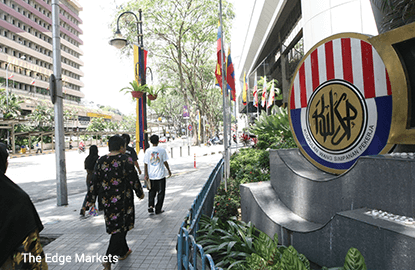
This article first appeared in The Edge Financial Daily, on May 9, 2016.

KUALA LUMPUR: The Employees Provident Fund (EPF), the world’s seventh-largest retirement fund, has seen its investment assets more than triple over the past 15 years to RM684.53 billion as at end-2015, from RM184.57 billion in 2001.

Members’ contribution probably reached a record high in 2014 at RM57.17 billion, more than double the contribution of RM24.37 billion in 2005, according to the EPF’s annual reports. Contribution was at RM53.9 billion in 2015. Statistics on contribution were not available before 2005.
In terms of returns for its members, the EPF has been consistent in meeting its dividend policy of inflation plus 2% over the years, and maintaining dividend payment rates of between 4.25% and 6.75% since 2001.
The fund has consistently managed to maintain returns on investment (ROI) of above 5% since 2001, with the exception of 2009 when its ROI dipped to 4.88%.
The fund attributed the lower return for the year to lower reinvestment yields and holdings of Malaysian government securities, as well as the reduction in the overnight policy rate to 2%, which affected returns from its investment in money market instruments.
 Its number of members has increased by 28% to 14.55 million in 2015 since 2006.
Its number of members has increased by 28% to 14.55 million in 2015 since 2006.
Over the years, the EPF has invested in line with its strategic asset allocation (SAA) plan, which was implemented in 2008 during Tan Sri Azlan Zainol’s tenure as chief executive officer (CEO) up to 2012.
The SAA denoted that fixed income assets should make up the majority of the fund’s assets at 51%, followed by equities (36%), real estate and infrastructure (10%) and cash (3%).
As at 2015, fixed income assets accounted for 51% of its investments, while equities, real estate and money market instruments accounted for 44%, 3% and 2% respectively.
The implementation of the SAA also encouraged the diversification of the EPF’s portfolio to include international investments. Current EPF CEO Datuk Shahril Ridza Ridzuan continued with the provident fund’s diversification efforts when he took the helm in 2012.
This is evident in the steady increase in the fund’s overseas investments, which made up about 25% of its investment assets in 2015, compared with just 10% in 2010.
As at end-2015, its foreign investments comprised equities, fixed income and inflation-linked assets in Asia, which accounted for 43% of its foreign exposure, followed by Europe (23%), North America (25%), Australia (5%) and others (4%).
Its notable overseas real estate investments include the Reading International Park, 40 Portman Square and Sainsbury’s, Brighton in the United Kingdom; Espace Lumiere in France; and 50 Ann Street and 50 Marcus Clarke in Australia.